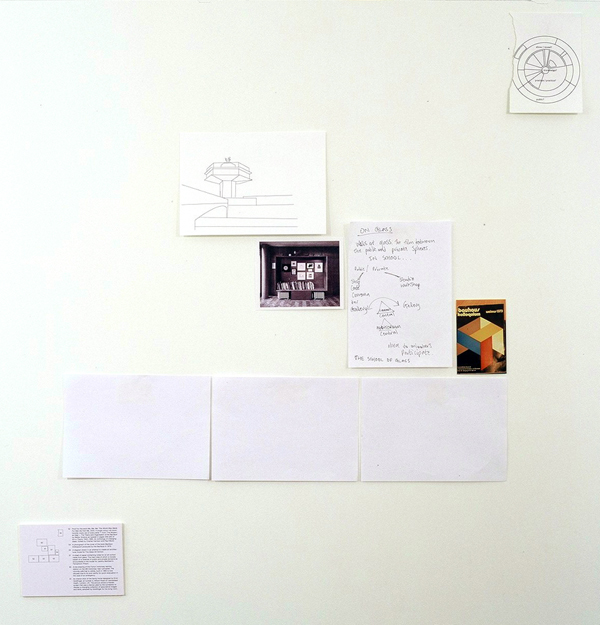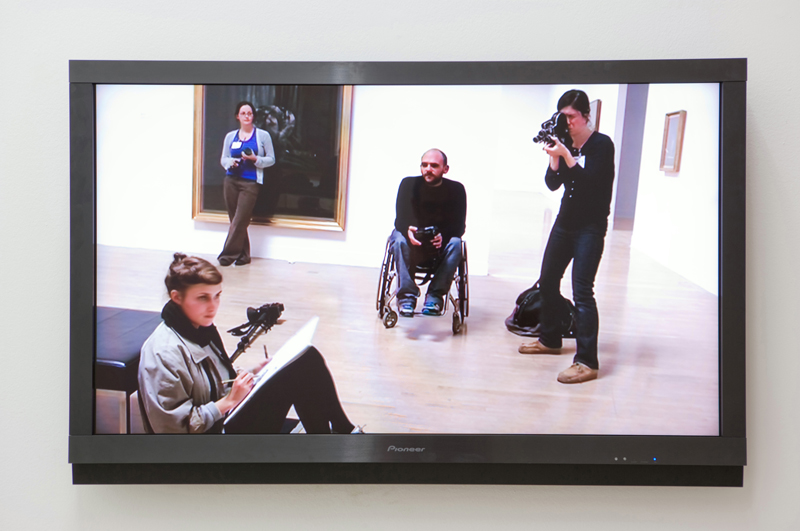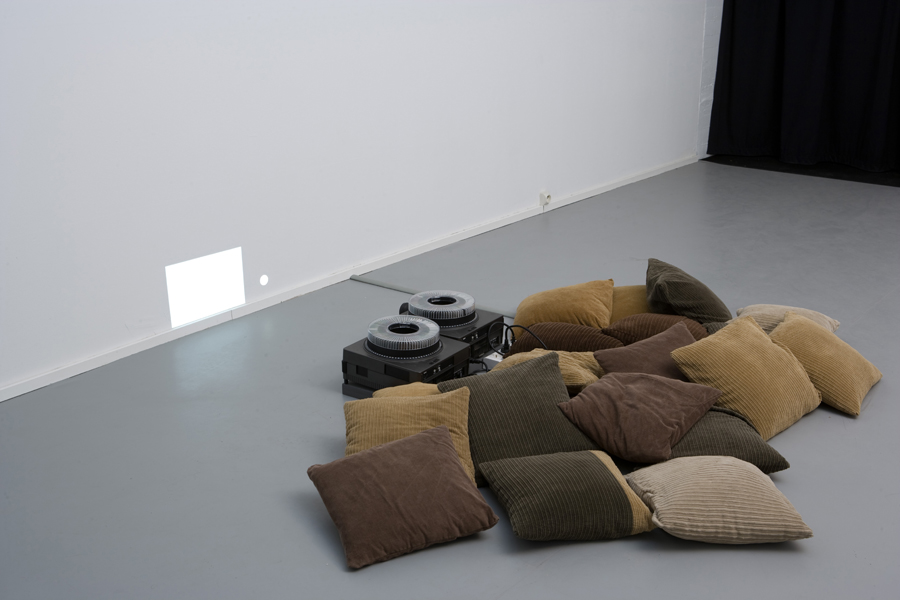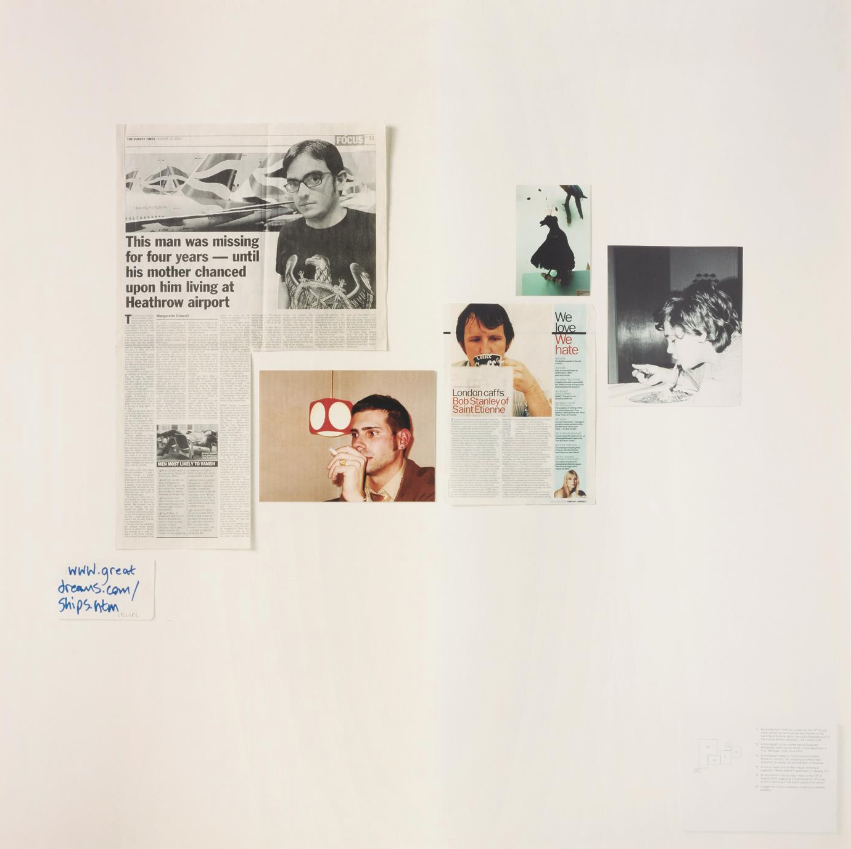Our love is like the Flowers, the Rain, the Sea and the Hours
2003 - Installation (Installation)
Martin Boyce
In the installation Our Love is like the Flowers, the Rain, the Sea and the Hours, Martin Boyce uses common elements from public gardens – trees, benches, trashbins– in a game which describes at once a social space and an abstract dream space. The trees, unique sources of light in the exhibition space, produce their own environment. These sculptures, as if extracted from a set, are enough to suggest an atmosphere, a landscape, or a movie. Their nocturnal depiction is ambivalent, hovering between poetic beauty and the potential threat of a park at night. Romantic views of nature blend with modern ideas of optimism and equality. However, from it emerges from a deep anxiety or paranoia. The perceived space cannot be localized inside a certain reality, rather it pertains to the everyone’s imagination. Therefore, in the installation, the viewer produces what he sees around him with his own eyes and own journey through the space. Its space becomes the psychological and emotional space of an idler. When describing the piece, Boyce has stated that the sculptures move far from the visible and the material generating more of an emotional state rather than theoretical reflection. “My installations draw upon imaginary and fragmented landscapes. When I introduce an object within an installation, it recalls the world from where it is derived from, like a fragment, it is a exploded variation.” The universe of Martin Boyce is multifarious, extracting fragments of reference as varied as architecture, design, cinema, Scottish literature, Japanese poetry, etc. His forms do not fit perfectly within one category and exist more as ghosts of meaning. For instance, a sculpture can distinctly resemble a tilted ping-pong table although all the elements deviate from such a table to a great extent. Concrete trees by Joel and Jan Martel made in 1925 for the Decorative Arts Exhibition in Paris are a recurrent theme throughout the work of Boyce, as well as replicas in “Electric trees and telephone booth” (2006) and formal traces in works such as “We are still and reflective” (2007). The artist sees these objects as a perfect “collapse” between architecture and nature. The sculptures, consisting of trees, gates, vents, signs, dot the exhibition space, becoming a stage. While the forms and materials from were conceived to be functional, Martin Boyce uses them less as objects of representation and more as objects of emotion. Their titles, extracted from fragments of poems, pop songs, slogans, exist as a way to “inhabit” the installations and poeticize the real.
“My installations draw upon imaginary and fragmented landscapes. When I introduce an object within an installation, it recalls the world from where it is derived from, like a fragment, it is a exploded variation.” The universe of Martin Boyce is multifarious, extracting fragments of reference as varied as architecture, design, cinema, Scottish literature, Japanese poetry, etc. His forms do not fit perfectly within one category and exist more as ghosts of meaning. For instance, a sculpture can distinctly resemble a tilted ping-pong table although all the elements deviate from such a table to a great extent. Concrete trees by Joel and Jan Martel made in 1925 for the Decorative Arts Exhibition in Paris are a recurrent theme throughout the work of Boyce, as well as replicas in Electric trees and telephone booth (2006) and formal traces in works such as We are still and reflective (2007). The artist sees these objects as a perfect “collapse” between architecture and nature. The sculptures, consisting of trees, gates, vents, signs, dot the exhibition space, becoming a stage. While the forms and materials from were conceived to be functional, Martin Boyce uses them less as objects of representation and more as objects of emotion. Their titles, extracted from fragments of poems, pop songs, slogans, exist as a way to “inhabit” the installations and poeticize the real. Martin Boyce was born in Glasgow, Scotland in 1967 where he lives and works today.
Colors:
Related works from the » 2000's created around » Hamilton, United Kingdom

© » KADIST
Fred Wilson
2009Fred Wilson’s flag paintings document the 20th century history of African people, indexing the period of liberation from colonialism...

© » KADIST
Alexandre da Cunha
2005His Deck Painting I recalls the simplistic stripes of conceptual artist Daniel Buren, or the minimal lines of twentieth century abstract painting, but is in reality a readymade, fashioned from repurposed fabric of deck chairs...

© » KADIST
Martin Creed
2003This photograph of Martin Creed himself was used as the invitation card for a fundraising auction of works on paper at Christie’s South Kensington in support of Camden Arts Centre’s first year in a refurbished building in 2005...

© » KADIST
Alexandre da Cunha
2005Glaze (Savana) (2005) is an assemblage of found materials: a car wheel, a tire, and a wooden plinth of the type traditionally used to display sculpture...

© » KADIST
Cerith Wyn Evans
2008Untitled (Perfect Lovers + 1) by Cerith Wyn Evans takes as its starting point Felix Gonzales-Torres’s seminal work Untitled (Perfect Lovers) , in which two clocks were synchronized and left to run without interference, the implication being that one would stop before the other...

© » KADIST
Toby Ziegler
2005The Fifth Quarter might have taken its mysterious inspiration from the eponymous Stephen King story collated into the Nightmares & Dreamscapes collection...

© » KADIST
Matthew Buckingham
2002Matthew Buckingham presents a narrative directly connected with a highly symbolic site in the United States, the Mount Rushmore Memorial*...

© » KADIST
Ian Breakwell
2008“BC/AD” (Before Cancer, After Diagnoses) is a video of photographs of the artist’s face dating from early childhood to the month before he died, accompanied by the last diary entries he wrote from April 2004 to July 2005 (entitled “50 Reasons for Getting Out of Bed”), from the period from when he lost his voice, thinking he had laryngitis, through the moment he was diagnosed with lung cancer and the subsequent treatment that was ultimately, ineffective...

© » KADIST
Kelley Walker
2004The triptych Black Star Press is part of the series ‘The Black Star Press project’ initiated in 2004 by the American artist Kelley Walker...

© » KADIST
Andrew Grassie
2009In 2008, Grassie was invited by the Whitechapel Gallery to document the transformation of some of its spaces...

© » KADIST
Hiraki Sawa
2006Hako (2006) depicts a mysterious and dystopic landscape where the world becomes flat: distance between different spaces, depth of field and three-dimensional perceptions are canceled...
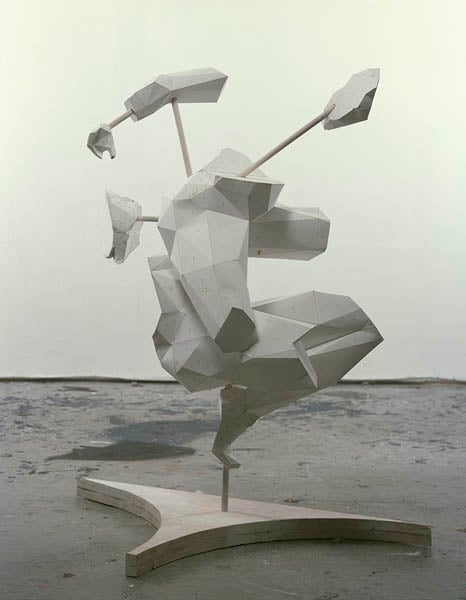
© » KADIST
Toby Ziegler
2007Wagon Wheel is a work with a fundamental dynamism that derives both from the rotating movement of the elements suspended on poles and the kicking of the legs of the figure...

